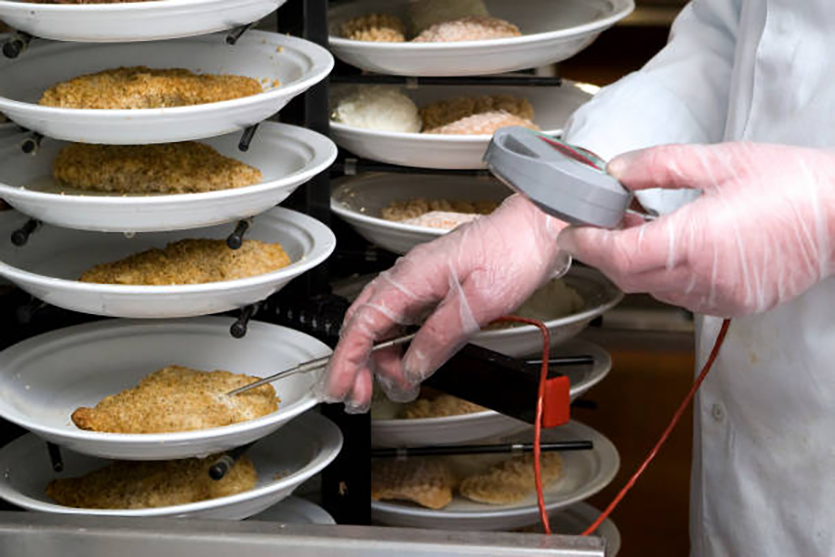What is food fraud & food defense?
Page Information

Contents
What is food fraud & food defense?
Food fraud and food defense are included in the requirements of international food standards such as FSSC22000, IFS, and SQF, which are GFSI-approved standards, and are verified to minimize the risk of food fraud or purchase contaminated food raw materials and packaging materials and to avoid legal problems. We are requesting that a food safety management system be established for
Food defense is an important element in protecting businesses and consumers from internal and external threats. It encompasses a wide range of potential threats, from relatively common manipulation to unlikely terrorist attacks. Often, a broader threat can be reduced by mitigating supply chain or manufacturing threats. For example, placing a locking lid on a barrel can reduce a wide range of potential intentional attacks.
The motivation or root cause of food defense is the intent to harm consumers or businesses. Food defense differs from food fraud in that the motivation is the intent to harm consumers or businesses against an ideologically or behaviorally motivated background rather than economic gain. The damage may be economic, public health or terrorist. Because the motivations are different, food defense and food fraud prevention require different approaches.
Although acts of food fraud may be economically beneficial, they can nonetheless pose food safety risks. Such risks are often caused by carelessness or lack of knowledge about fraud.
Risks for consumer food fraud may include :
- a) Direct food safety risk: When consumers are at immediate risk. (e.g. addition of melanin to infant formula resulting in acute toxic exposure, masking undeclared allergens)
- b) Indirect food safety risk: When consumers are at risk through long-term exposure. (e.g. when high levels of heavy metals in food supplements cause long-term harm or lack of benefit)
- c) Technical food fraud risk: When there is no direct or indirect food safety risk. (e.g. misrepresentation of origin information) However, this indicates that the traceability of ingredients may have been compromised and companies can no longer ensure the safety of their food.
 < food fraud &food defense >
< food fraud &food defense >
1. What is food fraud & food defense?
| Food fraud | Food/feed and auxiliary materials, packaging materials, labeling, food information or false statements, mislabeling, etc., which may affect the health of consumers and include intentional substitution, addition, alteration or misrepresentation of products for the purpose of obtaining economic gain. generic name |
|---|---|
| Food defence | Program of protective measures to mitigate situations where food is intentionally or maliciously contaminated |
2. Requirements
FSSC22000 Version 5.1
-
Section 2.5.3 Food Defense
-
1) 2.5.3.1 Threat element assessment
The organization must have documented procedures for :
- a) Conduct a threat assessment to identify and evaluate potential threats related to food defense.
- b) Develop and implement mitigation measures for significant threats.
-
2) 2.5.3.2 Planning
- a) The organization must have a written food defense plan that specifically specifies mitigation measures for processes and products within the scope of the organization's food safety management system.
- b) The organization's FSMS must support the food defense plan.
- c) The food defense plan must comply with applicable laws and regulations and be kept up to date.
-
1) 2.5.3.1 Threat element assessment
-
Section 2.5.4 Food Fraud Mitigation
-
1) 2.5.4.1 Vulnerability assessment
The organization must have documented procedures for :
- a) Conduct a food fraud vulnerability assessment to identify and evaluate potential vulnerabilities.
- b) Develop and implement mitigation measures for critical vulnerabilities.
-
2) 2.5.4.2 Planning
- a) Must have a documented food fraud mitigation plan that specifies mitigation measures that include processes and products within the organization's food safety management system.
- b) The food fraud mitigation plan must be supported by the organization's food safety management system.
- c) The plan must comply with relevant laws and be updated.
-
1) 2.5.4.1 Vulnerability assessment
 < FSSC22000 Version 5.1 >
< FSSC22000 Version 5.1 >
3. Implementation of FSSC22000 Food Defense and Food Fraud Requirements
There are many approaches to food defense, most notably TACCP (Threat Assessment Critical Control Points: recommended in PAS96).
The TACCP plan consists of the following steps :
- • Establish a multidisciplinary team comprised of members from all relevant departments to help develop the TACCP plan
- • Identify threat points in production and supply chain
- • Carry out an assessment of critical matters to identify risks
- • Analyze risks and monitor threat control points
- • Choose an appropriate action plan
- • Verification and staff training
- • Documentation and continuous improvement of the TACCP process
To help implement the requirements of FSSC 22000 Food Fraud Prevention, the following practices are recommended: (e.g. VACCP)
- • Forming a Food Fraud Reduction Team
- • Conduct a Food Fraud Vulnerability Assessment (FFVA) to identify potential vulnerabilities
- • Define critical vulnerabilities
- • Identification and selection of proportionate control measures for critical vulnerabilities.
- • Document vulnerability assessment, control measures, verification and incident management procedures in the food fraud prevention plan supported by the food safety management system.
- • Establish effective training and communication strategies and implement food fraud prevention plans.
4. Conclusion
As food safety management certification standards, including food safety management, are expanding internationally based on HACCP, food safety must be secured through continuous improvement by operating systems such as food fraud and food defense.
[ Reference ]
Korean Food Institute International Food Safety Management System Certification Guidelines – Volume 1
FSSC-22000-Scheme-Version-5.1
PAS 96: 2017 Guide to protecting and protecting food and drink from deliberate attack
- PreviousISO 37301:2021 Compliance Management Systems 23.10.16
- NextInformation technology — Security techniques — Information security management systems — Overview and vocabulary 23.09.13
Comment list
There are no registered comments.

